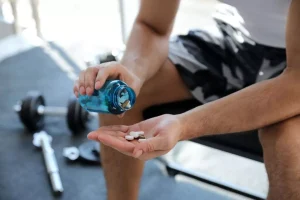
Alcohol-induced cardiomyopathy is a condition that can have major impacts on your life over time. While many people will recover from this condition if they abstain from alcohol, others will have symptoms and related problems for the rest of their life. If you are a heavy drinker, talking to a primary care provider can help keep this condition from becoming even more severe in the future, or even prevent it from happening. Your provider is the best source alcoholic cardiomyopathy is especially dangerous because of information and guidance, and they can connect you to other resources that can help and experts who can assist.
- Alcoholic cardiomyopathy is a condition that weakens your heart and its ability to pump blood.
- The existence of a direct causal link between excessive alcohol consumption and the development of DCM is a controversial issue.
- This includes a combination of beta-blockers, an angiotensin-converting enzyme inhibitor, diuretics, aldosterone receptor antagonist and angiotensin blocker-neprilysin inhibitor (if LVEF is less than or equal to 40%).
How to Know if You Might Have Ischemic Heart Disease vs Alcoholic Cardiomyopathy
Abnormal heart sounds, murmurs, ECG abnormalities, and enlarged heart on chest x-ray may lead to the diagnosis. Pharmacologic therapy should include goal-directed heart failure therapy as used in idiopathic dilated cardiomyopathy with reduced ejection fraction. This includes a combination of beta-blockers, an angiotensin-converting enzyme inhibitor, diuretics, aldosterone receptor antagonist and angiotensin blocker-neprilysin inhibitor (if LVEF is less than or equal to 40%). The use of carvedilol, trimetazidine with other conventional heart failure drugs have been proven to be beneficial in some studies. Incidence of alcoholic cardiomyopathy ranges from 1-2% of all heavy alcohol users.
Swelling in the Legs (Edema)
- This leads to fluid buildup in the lungs, known as pulmonary congestion, making it difficult to breathe, especially during physical activity or when lying down.
- The most significant lifestyle risk factor for developing alcoholic cardiomyopathy is chronic, excessive alcohol consumption.
- A healthcare provider can also connect you with available resources and refer you to other specialists and experts who can help you reduce or stop your alcohol intake.
- Consider a heart-healthy diet, such as the Mediterranean diet or the DASH diet.
- Acute can be defined as large volume acute consumption of alcohol promotes myocardial inflammation leading to increased troponin concentration in serum, tachyarrhythmias including atrial fibrillation and rarely ventricular fibrillation.
If you see any signs of alcoholic cardiomyopathy, contact emergency medical services immediately. This is especially true if your genetic condition affects how your body metabolizes alcohol. However, the best way alcohol rehab to completely prevent alcoholic cardiomyopathy is not to drink at all.
Pharmacological treatment for alcohol use disorder
This review will provide an updated view of this condition, including its epidemiology, pathogenesis, diagnosis, and treatment (Graphical Abstract). Enzymatic activity changes which are seen in the idiopathic cardiomyopathy including decreased activity of oxygen reduction mitochondrial enzymes, increased fatty acid uptake and increased lysosomal/microsomal enzyme activity can be seen. The muscles that control the lower chambers of your heart, the left and right ventricle, are especially prone to this kind of stretching. These chambers are important as they do the majority of the work of your heart, with the right ventricle pumping blood to your lungs and the left ventricle pumping blood to your entire body. Weakening in the muscles around the ventricles means they can’t pump as hard, which negatively affects your entire body. Alcohol-induced cardiomyopathy can affect anyone who consumes too much alcohol, even those who don’t have alcohol use disorder.
Echocardiographic and haemodynamic studies in alcoholics
Females constitute roughly 14 % of cases of alcohol induced cardiomyopathy however lifetime exposure required for women to develop alcohol induced cardiomyopathy is less compared to men. Dilated cardiomyopathy secondary to alcohol use does not have a pre-defined exposure time. Daily alcohol consumption of 80 g per day or more for more than 5 years significantly increases the risk, however not all chronic alcohol users will develop Alcohol-induced cardiomyopathy. Your doctor will also ask you about your medical history and drinking habits. It’s important to be honest with your doctor about the extent of your alcohol use, including the number and amount of drinks you have each day.
Binge drinking, which involves consuming large amounts of alcohol in a short period, can also contribute to heart damage. Several medical conditions can increase the risk of developing alcoholic cardiomyopathy. Individuals with a history of high blood pressure (hypertension) are at higher risk because the heart has to work harder to pump blood, worsening alcohol-induced damage.
Alcohol-induced cardiomyopathy treatment includes a combination of lifestyle modifications, pharmacological treatment, management of arrhythmia, and supportive care. Data suggests patients with successful quitting of alcohol have improved overall outcomes with a reduced number of inpatient admissions and improvement in diameter size on echocardiogram. The key to diagnosis is a personal history of chronic heavy alcohol use and the absence of other etiologies.
Risk Factors of Alcoholic Cardiomyopathy

In contrast, alcoholic cardiomyopathy would show a weakened heart muscle on an echocardiogram without artery blockages. As pointed out before, the current accepted https://ecosoberhouse.com/ definition of ACM probably underestimates the number of women affected by the disease. Alcohol affects heart function and is dependent on the quantity of alcohol that the heart is exposed to. Women typically have a lower BMI than men, and therefore the same alcohol exposure can be achieved with lower alcohol intake. Epidemiological studies analysing the relationship between excessive alcohol consumption and the development of DCM have found the existence of a reciprocal link between both disorders.


The effect is much like how a rubber band or spring weakens when stretched too much. Alcohol-induced cardiomyopathy is a relatively uncommon condition, occurring in about 1% to 2% of people who consume more than the recommended amounts of alcohol. Patients can expect a gradual reduction in cholesterol levels, which may help slow heart disease progression.

The NIAAA provides an Alcohol Treatment Navigator, where people can learn about AUD treatments and access care and support networks locally. According to the NIAAA, many people with AUD recover, although setbacks are common among those receiving treatment. A 2023 article notes that ACM carries a more positive outlook than ischemic cardiomyopathy, which refers to heart damage that typically occurs due to CAD. As a point of reference, consuming 80 grams of alcohol daily for at least 5 years can significantly increase the risk of ACM. Although lab tests aren’t useful in diagnosing the condition, they can help check the severity of your heart condition. Many changes can be observed including premature atrial or ventricular contractions, supraventricular tachycardias, atrioventricular blocks, bundle branch blocks, QT prolongation, non-specific ST and T wave changes and abnormal Q waves.








